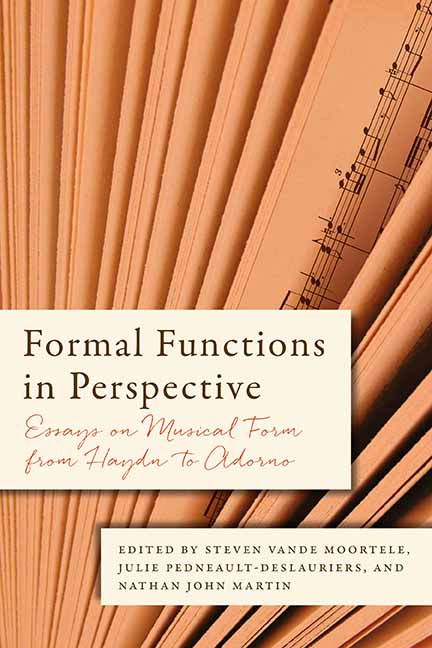Book contents
12 - Form and Serial Function in Leibowitz’s Trois Poèmes de Pierre Reverdy
Published online by Cambridge University Press: 26 May 2021
Summary
Trois poèmes de Pierre Reverdy, one of the last works by René Leibowitz (1913–72), is a set of three short songs for four voices and piano. Composed in 1971, a year before the composer's death, the work raises interesting questions about form and style. We will first consider a few excerpts to acquaint the reader with the unique and unmistakably French flavor of Leibowitz's musical language. We will then discuss Leibowitz the theorist and proceed to analyze his Trois poèmes, calling upon compositional and analytical concepts discussed in Leibowitz's unpublished treatise on form in serial music, “Traité de la composition avec douze sons” (ca. 1950).
Example 12.1 shows the beginning of the first movement. The opening piano phrase in measure 1 sounds disjunct and Webernian. It serves to introduce the choral phrase that follows in measures 2–3, which is in contrast very smooth, with much oblique and stepwise motion. This pairing of a piano solo measure with a continuing choral phrase is replicated in the following measures (4–6), suggesting a simple principle of form-building and raising questions about what will follow.
Example 12.2 shows the beginning of the second movement. Its texture (double canon) in a simple declamatory rhythm recalls examples from the choral music of Mendelssohn, Brahms, Schoenberg, and Webern. In contrast to the opening of the first movement, whose phrases are clearly demarcated, the phrases here almost all overlap.
The texture of the third movement is completely different. The piano opening shown in example 12.3a makes a clear reference to the first Gymnopédie of Erik Satie. Finally, the end of the third movement, shown in example 12.3b, includes a succession of major and minor triads, concluding the work on an extended tonal harmony with a distinctly “French” sound (a major triad in second inversion with added augmented fourth in the last measure). These excerpts cause us to wonder: how can the relatively conservative use of a single twelve-tone row be made to assume such different musical characters; how do the final chords at the end of the third movement come about; and how does Leibowitz articulate form in such different environments?
Information
- Type
- Chapter
- Information
- Formal Functions in PerspectiveEssays on Musical Form from Haydn to Adorno, pp. 373 - 410Publisher: Boydell & BrewerPrint publication year: 2015
Accessibility standard: Unknown
Why this information is here
This section outlines the accessibility features of this content - including support for screen readers, full keyboard navigation and high-contrast display options. This may not be relevant for you.Accessibility Information
- 1
- Cited by
